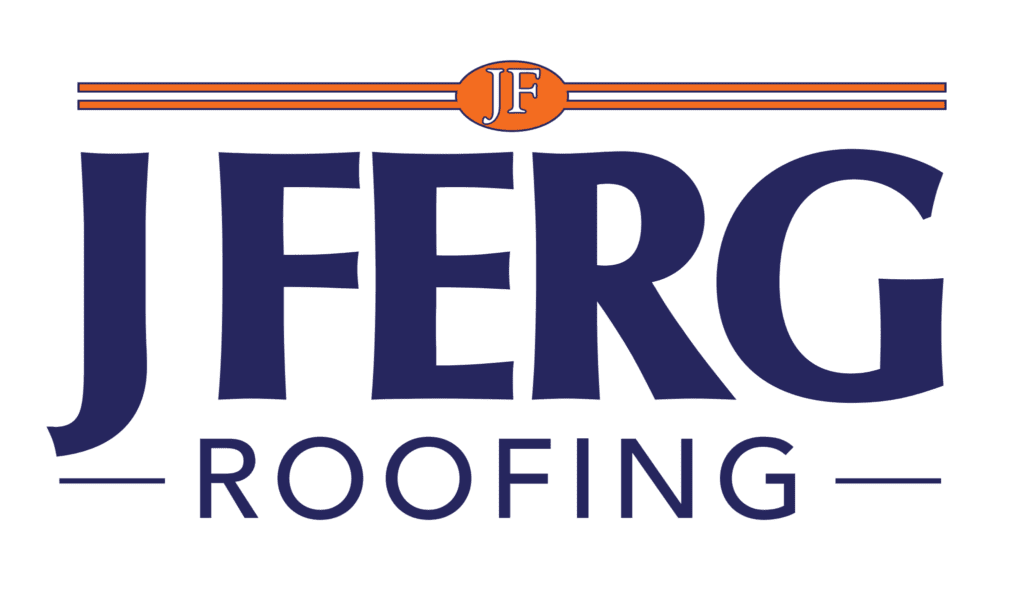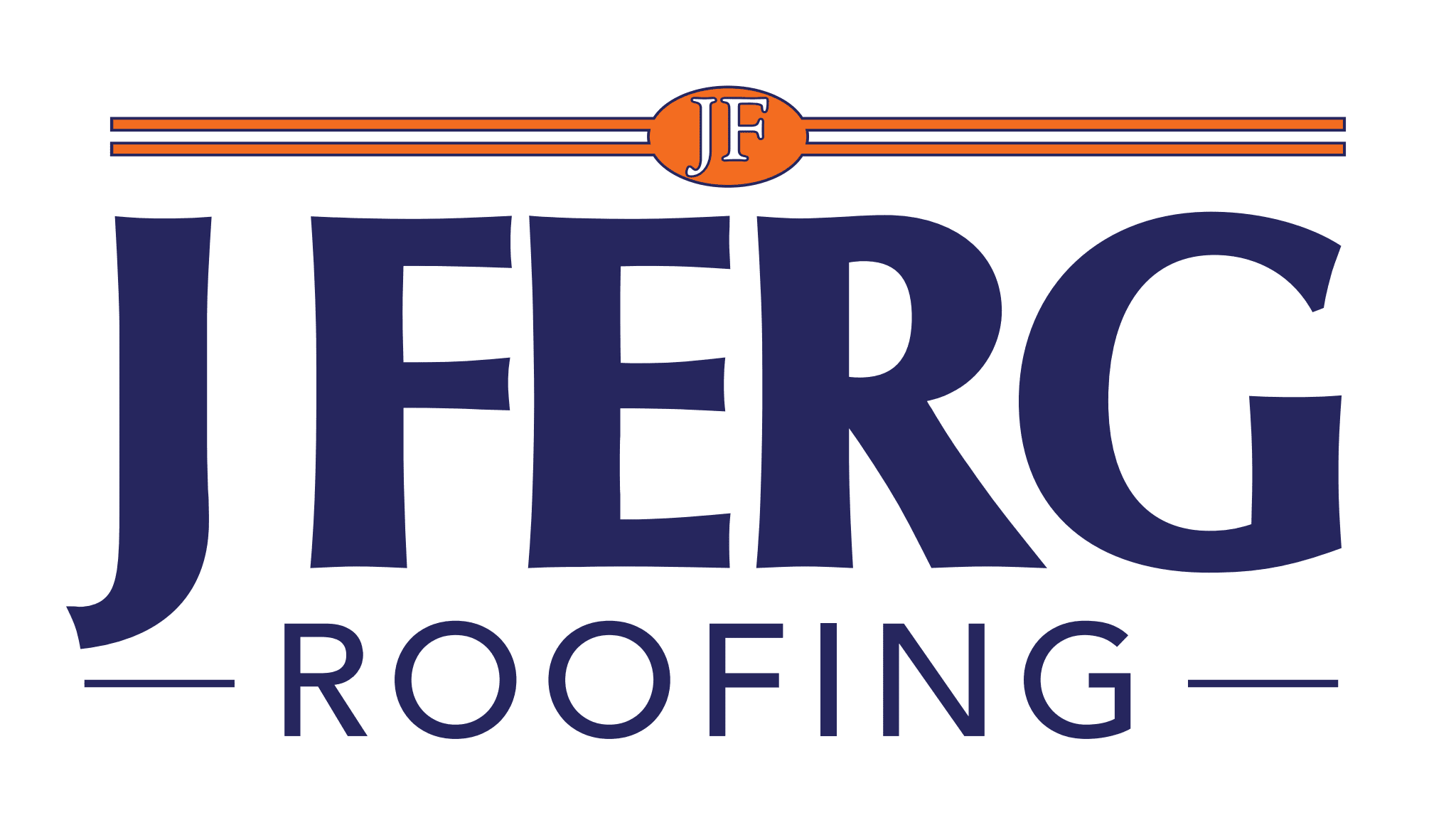J Ferg Knowledge Base
How to Spot Hail Damage: A Guide for J Ferg Roofing Clients
Hailstorms can cause significant damage to your roof, and identifying the signs of hail damage is crucial to maintaining the longevity and performance of your roofing system. At J Ferg Roofing, we understand the importance of helping our clients spot and address hail damage promptly. In this blog, we’ll guide you through the critical indicators of hail damage and the steps to take if you suspect your roof has been affected.
Inspect Your Roof for Visible Signs of Hail Damage
After a hailstorm, performing a visual inspection of your roof is essential. Some common signs of hail damage include:
- Dented or cracked shingles
- Granule loss on shingles, which can appear as bald spots or areas where the underlying mat is exposed
- Pockmarks or circular indentations on shingles or metal roofing
- Damaged or displaced flashing and vents
Remember to prioritize safety when inspecting your roof. If you’re uncomfortable or unable to assess your roof safely, contact a professional roofing contractor like J Ferg Roofing to conduct a thorough inspection.
Check for Collateral Damage Caused by the Hail Storm
Hail damage isn’t limited to the roof. For signs of hail impact, examine other parts of your property, such as gutters, downspouts, siding, windows, and outdoor furniture. Damage to these areas can indicate that your roof may have also sustained damage during the storm.
After a Hail Storm, Inspect Your Attic for Leaks
After a hailstorm, check your attic for any signs of water infiltration, such as wet insulation, water stains on the ceiling, or dripping water. Hail damage can compromise the integrity of your roofing system, allowing water to seep into your home and cause further damage.
Make Sure You Document the Hail Damage
If you identify signs of hail damage, take photos and detailed notes to document the extent of the damage. This information can be helpful when filing an insurance claim or discussing repair options with a professional roofing contractor.
Contact a Professional Roofing Contractor
If you suspect that your roof has sustained hail damage, it’s crucial to consult a professional roofing contractor like J Ferg Roofing. Our team of experts can perform a thorough inspection, assess the extent of the damage, and provide recommendations for repair or replacement. We’ll work with you to restore your roof to its optimal condition, protecting your home and your family.
Don’t hesitate! Call J Ferg Today!
Early detection and timely repairs can save you time, money, and stress in the long run, so don’t hesitate to call us if you suspect any hail damage to your roof. We’ll make sure the repairs are made quickly and efficiently.
Water Damage
The most evident consequence of storm damage on a roof is water damage. When your roof’s defenses are breached, water can infiltrate your home through leaks, leading to a myriad of issues:
- Mold and mildew growth: Persistent moisture creates a breeding ground for mold and mildew, which can spread throughout your home. This not only compromises the indoor air quality but can also pose health risks, especially for individuals with allergies or respiratory problems.
- Structural damage: Prolonged water exposure can weaken your home’s structural integrity, resulting in expensive repairs or even a dangerous collapse.
- Damaged insulation: Water-soaked insulation loses its effectiveness, causing your energy bills to rise as your home struggles to maintain comfortable temperatures.
Damaged or Missing Shingles
High winds and hail can damage or strip away shingles, leaving your roof vulnerable to the elements. This can lead to several problems:
- Increased susceptibility: A roof with damaged or missing shingles is more prone to additional damage from future storms, compounding the problem and escalating repair costs.
- Reduced lifespan: Compromised roofs have a shorter lifespan compared to well-maintained ones, necessitating more frequent and costly replacements.
Gutter Damage
Storms can also wreak havoc on your gutters, causing them to sag, detach, or become clogged. This seemingly minor issue can result in significant problems:
- Water pooling: Damaged or clogged gutters can cause water to accumulate around your home’s foundation, leading to basement flooding and potential foundation damage.
- Ice dams: In colder climates, damaged gutters can contribute to the formation of ice dams, which can cause further damage to your roof, gutters, and even interior walls and ceilings.
Compromised Roof Structure
In extreme cases, the sheer force of a storm can weaken the roof structure itself. This can manifest in various ways:
- Sagging or buckling: A weakened roof structure can result in visible sagging or buckling, which is not only an eyesore but also a potential hazard.
- Increased risk of collapse: A severely compromised roof structure poses a significant risk of collapse, endangering your family, your belongings, and the overall integrity of your home.
Insurance Claims and Financial Impact
Storm damage to your roof can have far-reaching financial implications, including:
- Insurance claims: Filing a claim with your insurance company to cover the costs of repairing storm damage can be a complex and time-consuming process, often requiring detailed documentation and negotiation.
- Increased premiums: In some cases, filing an insurance claim for storm damage can result in higher insurance premiums, impacting your long-term financial planning.
- Out-of-pocket expenses: Depending on your coverage, deductibles, and the extent of the damage, you may be responsible for shouldering a portion of the repair costs out of pocket.
The effects of storm damage on a roof can range from minor cosmetic issues to severe structural problems. Addressing any damage promptly is crucial to prevent further deterioration and to protect your home and family. If you suspect that your roof has been damaged by a storm, contact a professional roofing contractor to assess the situation and provide recommendations for repairs or replacement. Regular maintenance and inspections can also help you catch potential issues early and reduce the likelihood of significant storm damage. By taking proactive steps and addressing storm damage as soon as possible, you can safeguard your home, your family, and your investment for years to come.


